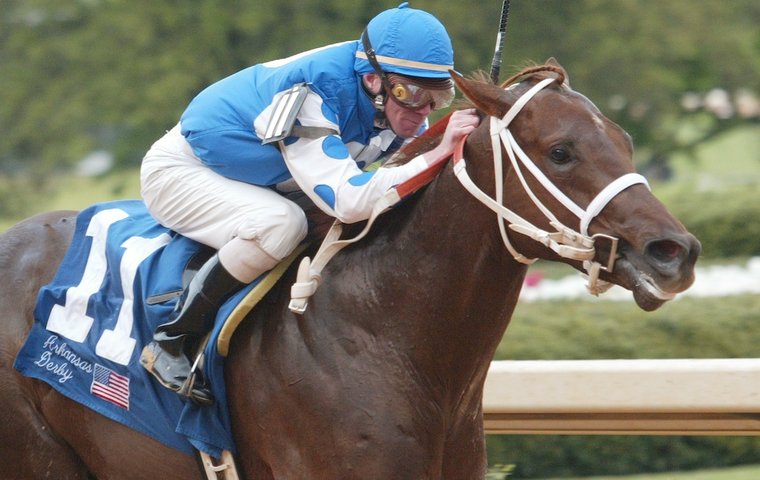
Jay Hovdey’s popular series continues with one of the most popular horses of the modern era who won the first two legs of the Triple Crown in 2004 when the entire nation was invited to the ‘Smarty Party’
Pat Chapman was growing wide-eyed with excitement as she watched her two-year-old Smarty Jones barrel through the opening furlongs of the 2003 Pennsylvania Nursery Stakes at Philadelphia Park, on the afternoon of November 22, five days before Thanksgiving.
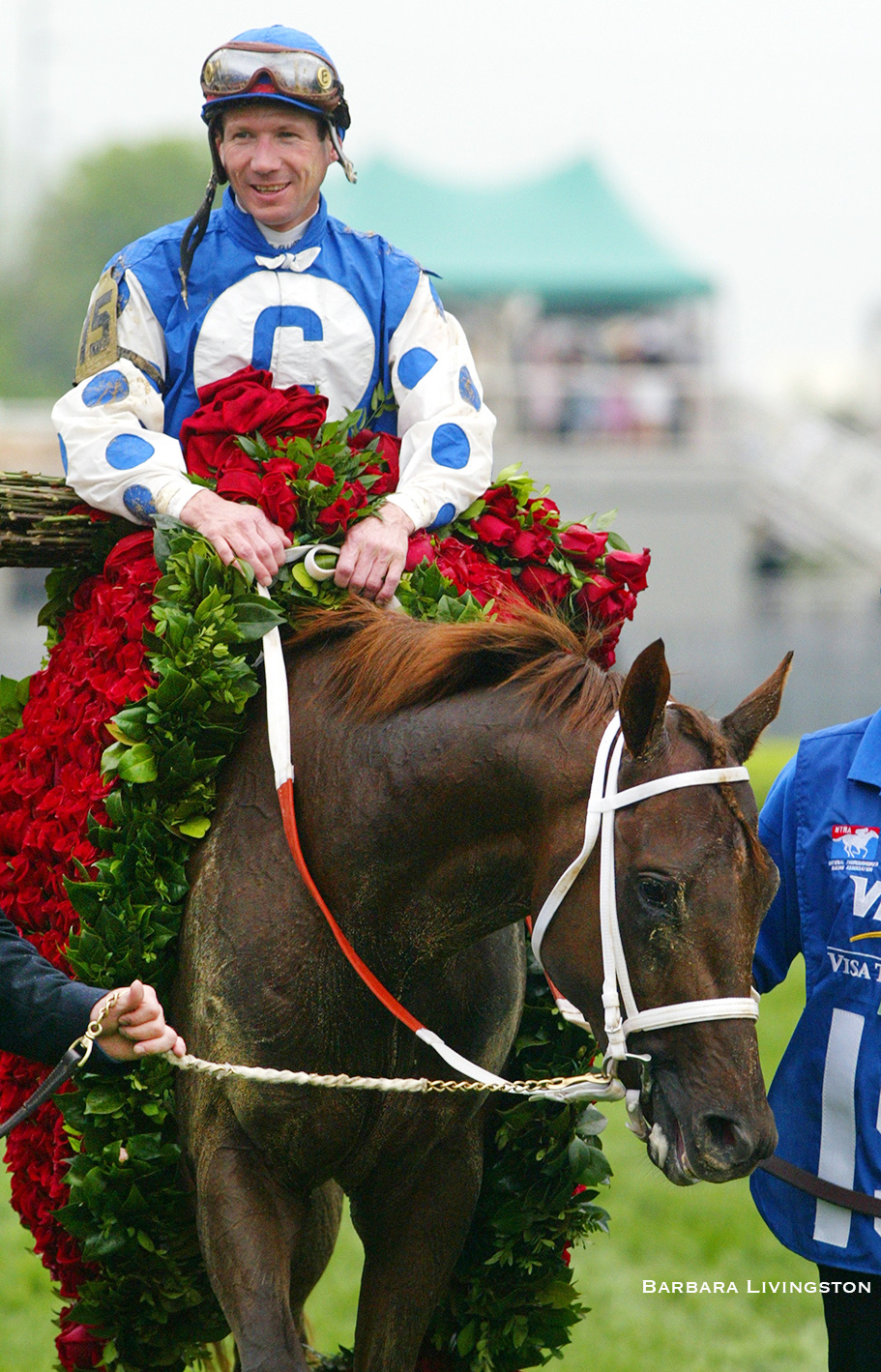 At Chapman’s side was her trainer, John Servis, whose attention was similarly riveted, although his reaction to the colt’s performance was vastly different.
At Chapman’s side was her trainer, John Servis, whose attention was similarly riveted, although his reaction to the colt’s performance was vastly different.
“When Smarty started leaving the other horses behind, I thought it was wonderful,” Chapman said. “But I could hear John going, ‘Oh no. Oh no.’ What was he seeing I was not?
“I asked John later what was troubling him during the race,” Chapman went on. “He said, ‘Pat, the way he was running, there was no way he could keep going at that speed. I thought he’d stop and they’d go right by him.”
Instead, he won by 15 lengths, shading 1:22 for the seven furlongs, and it would be more than six months before any other horse would catch Smarty Jones. But in the immediate wake of the Nursery Stakes, Chapman could only wonder aloud: “What next?”
The sky’s the limit
Someone blessed with psychic precognition would have said, “The sky’s the limit.”
At that moment, however, the pragmatic answer was the Count Fleet Stakes at a mile and 70 yards around the inner surface at Aqueduct, three days into the new year, a sensible, conservative step for one of only 914 Pennsylvania Thoroughbreds foaled in 2001.
Then Servis added: “If he can handle two turns in that race, I think we’ll be on the Derby trail.”
There it was, the ‘D’ word, uttered by veteran trainers only in moments of extreme delirium or supreme confidence, and Servis was anything but delirious. After Smarty Jones won the Count Fleet Stakes by five lengths, on a surprisingly mild winter day on Long Island, the trainer knew what the rest of the racing world was about to find out. Smarty Jones was a rare talent, and the game better get tied on.
 Twenty years ago, it was a grand time to be a racing fan, or a racing writer, or the management of a racetrack where Smarty Jones showed up with his entourage of Pat and Roy Chapman, John Servis and his All-American family, veteran jockey Stewart Elliott (right), foreman Bill Foster, groom Mario Arriega, and exercise rider Pete Van Trump.
Twenty years ago, it was a grand time to be a racing fan, or a racing writer, or the management of a racetrack where Smarty Jones showed up with his entourage of Pat and Roy Chapman, John Servis and his All-American family, veteran jockey Stewart Elliott (right), foreman Bill Foster, groom Mario Arriega, and exercise rider Pete Van Trump.
The racy chestnut, built for speed and efficiency, outran his pedigree and traditional expectations to capture the imagination well beyond the confines of the six tracks and five states where he appeared in a career of just nine starts.
Smarty Party
Looking back, it is difficult to figure out where the story of the accomplished racehorse left off and the ‘Smarty Party’ began, inspired by tales of tragedy, injury, and Triple Crown heartbreak, along with a $5 million roll of the dice that paid off in spades.
Smarty Jones was a son of Elusive Quality, a rocket of a racehorse who rose to a few spectacular occasions for Bill Mott and his owner, Sheikh Mohammed. At three, he came within a nose of winning Saratoga’s prestigious King’s Bishop Stakes. At five, he won the Jaipur Handicap at seven furlongs on turf at Belmont Park, then came back five weeks later to take the breath away in the Poker Handicap, winning by six lengths with a mile on turf in a course record 1:31.63.
Elusive Quality seemed to pay a price with that effort, though, and lost his last two races without a fight. He retired at Gainsborough Farm in 1999 as the latest son of Gone West to enter the stud.
I’ll Get Along, the dam of Smarty Jones, was a foal of 1992 by Smile, North America’s champion sprinter of 1986. A son of In Reality, Smile entered stud in 1987 for owner Frances Genter at Tartan Farms in Florida, where his sire had held court.
Also like In Reality, Smile moved on to Gainesway Farm in Kentucky, standing there beginning in 1989. In early 1991, Genter’s Foolish Pleasure mare Dont Worry Bout Me visited Smile at Gainesway, and in March of 1992 she gave birth to the filly who would someday produce Smarty Jones.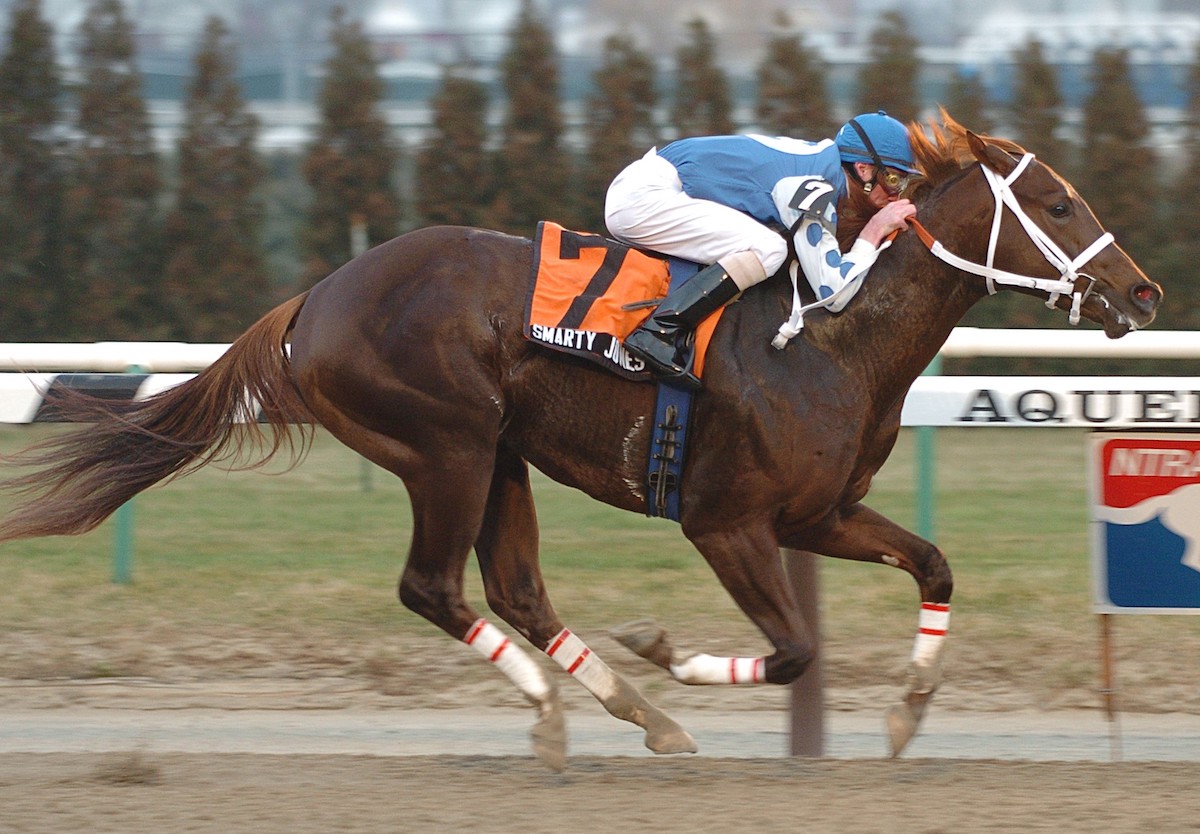
For Someday Farm, to be exact, which was the nom de course of Patricia Chapman and her husband Roy Chapman, of Philadelphia. They bought the Smile filly for $40,000 as a yearling, named her I’ll Get Along, and turned her over to Robert Camac for a racing career that lasted 39 starts over parts of five seasons. I’ll Get Along won a couple of minor stakes in New Jersey and 10 other races, for earnings of $276,969.
That amount turned out to be tops among all offspring of Smile, who was moved to a Texas Ranch in 1993 and died there in 1997 after suffering from equine protozoal myeloencephalitis (EPM). He was only 15.
I’ll Get Along made her final start in late December 1998. The following year she was bred to Formal Gold (the resulting filly, Be Happy My Love, won one of eight starts), then in 2000 she went to Elusive Quality on the recommendation of Camac. That foal arrived on Feb. 28, 2001, at the Chapmans’ Someday Farm in Chester County, Pennsylvania.
Running out of patience
At the time, the Chapmans were running out of patience with their racing investment. Through 2001, they began to offload assets, including I’ll Get Along for $130,000 at the November breeding stock sale at Keeneland. Her Elusive Quality colt had just been weaned. Camac advised his clients to at least retain the colt, plus one other, who had the look of potential racehorses.
Then, on the morning of Dec. 7, 2001, the slain bodies of Robert Camac and his wife, Maryann, were discovered at their farm in Oldsman Township, New Jersey, not far from Philadelphia Park racetrack.
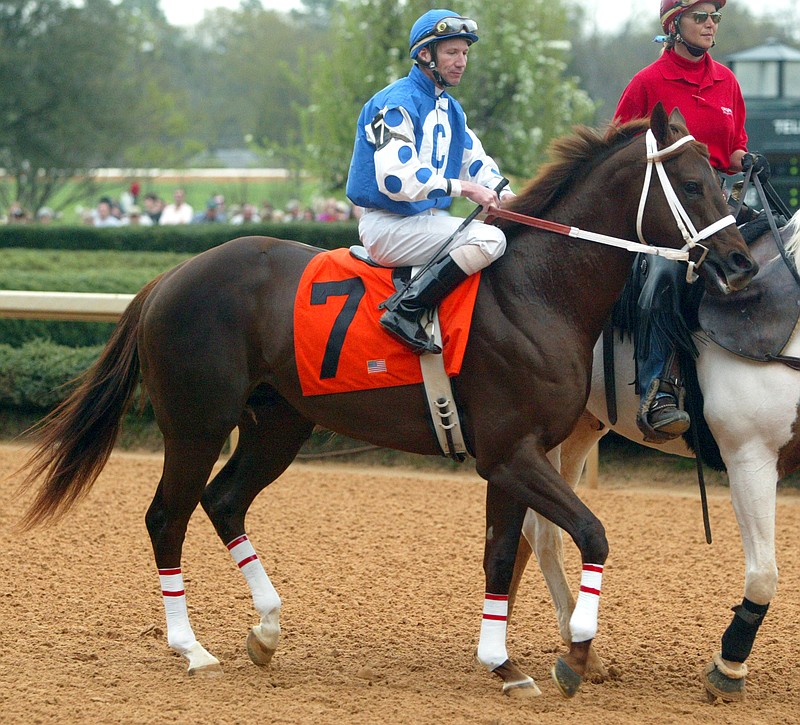 The Camacs had been married for 31 years. Wade M. Russell, Maryann Camac’s son by a previous marriage, was charged with two counts of first degree murder. It was discovered Russell had been stealing checks sent to the Camacs from purses earned on their horseman’s racing account.
The Camacs had been married for 31 years. Wade M. Russell, Maryann Camac’s son by a previous marriage, was charged with two counts of first degree murder. It was discovered Russell had been stealing checks sent to the Camacs from purses earned on their horseman’s racing account.
Russell was convicted on two counts of aggravated manslaughter, and as of early 2024 he still was serving his sentence at the New Jersey Department of Corrections in Trenton.
The Camac killings hit the racing community hard. The Chapmans were so distraught that they accelerated their dispersal, but in deference to Camac’s memory they did not sell the yearlings he had singled out.
The Elusive Quality colt at first was named Get Along, but since his birthdate coincided with that of Pat Chapman’s mother, Mildred Jones, a change was in order. As a child, Mildred’s nickname was ‘Smarty’.
When Smarty Jones went into early training at Bridlewood Farm in Ocala, the reviews were almost too good to be true. “George Isaacs at Bridlewood started calling us to say we had something special, that this could be the horse we’d been waiting for,” Pat Chapman said.
‘There’s not a price we’d sell’
“Then he started calling us with offers for the colt. My husband, being a car salesman, asked what they were offering. I said: ‘I don’t care what they’re offering. There’s not a price we’d sell.’ He started beating me to the phone every time it rang. But even then, there was no amount that would have changed the way we lived.”
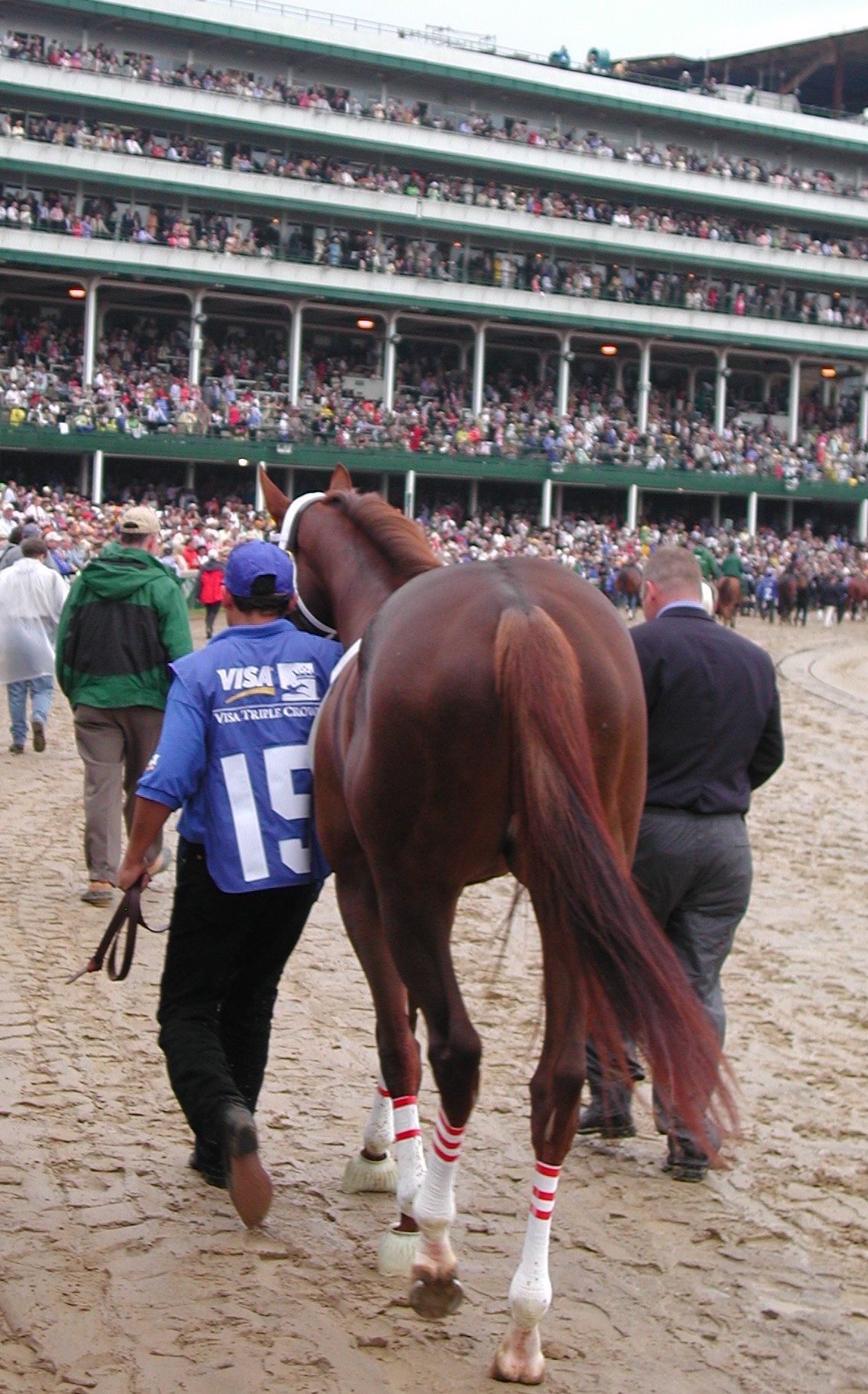
As 2003 unfolded, the young Smarty Jones was training like a monster. Pete Van Trump, his burly, broad-shouldered exercise rider, was having a hard time keeping the colt from running off.
As his first race approached, gate schooling was required, which is why on the morning of July 27, Van Trump was sitting quietly on his horse when Smarty Jones reared and crashed his head on an iron bar of the gate’s support structure. “I didn’t know how bad it was until I saw the blood,” Van Trump said later.
The left side of the colt’s skull was badly damaged by the blow. The following day, Smarty Jones was sent to the New Jersey Equine Clinic, where veterinary surgeon Patricia Hogan attended to a grim array of trauma, including skull and orbital bone fractures, damaged sinuses, and a left eye that was touch and go to save.
“He looked awful, and he was bleeding around the left nostril,” Hogan told Daily Racing Form. “Most horses would be distressed, screaming, whinnying at everybody, nervous, dancing around. He trotted in with his ears up like, ‘Here I am.’”
After a couple of months of stall rest and walking, Smarty Jones was back in training. His debut date was Nov. 9, 2003, at Philadelphia Park in a six-furlong open maiden event. Stewart Elliott, Philadelphia Park’s top jock, sat chilly all the way around to win by 7¾ lengths.
Once the Nursery and the Count Fleet were in the books, Servis had to choose a path to the Kentucky Derby. Passing on New York and Florida, he settled on Oaklawn Park in Hot Springs, Arkansas, and its three well-spaced stakes for three-year-olds.
Five millon reasons
“You do know we have a home in Florida,” Pat Chapman reminded Servis. “Why Arkansas?”
“I’m not sure I want him under the kind of pressure three-year-olds get in Florida,” Servis replied. “Besides, I heard something about a $5m bonus.”
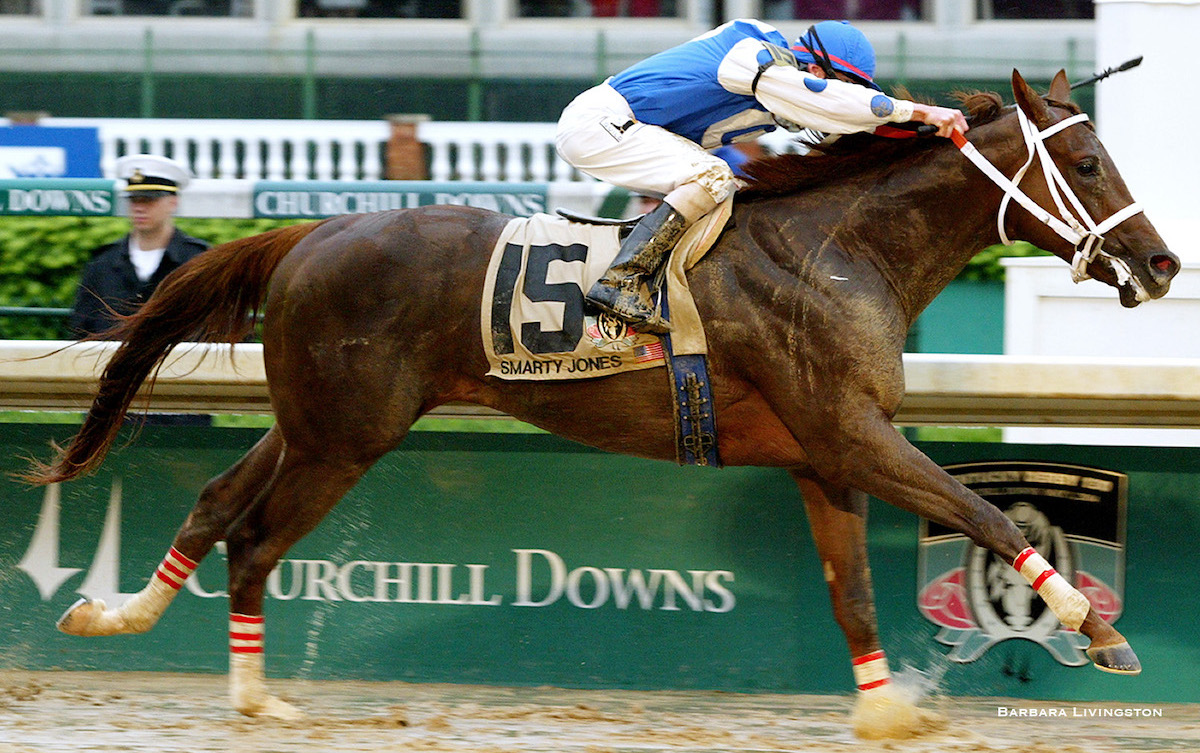 Oaklawn’s bonus of $5m for a horse who could sweep the Rebel Stakes, Arkansas Derby, and Kentucky Derby was announced in October 2003 as part of the track’s upcoming centennial celebration.
Oaklawn’s bonus of $5m for a horse who could sweep the Rebel Stakes, Arkansas Derby, and Kentucky Derby was announced in October 2003 as part of the track’s upcoming centennial celebration.
It was a product of a brainstorming session during a company retreat in Wyoming that summer, led by Oaklawn patriarch Charles Cella, who was otherwise known as a hidebound traditionalist.
“It’s true, dad was very much a ‘hay, oats, and water’ guy when it came to racehorse medication, and he was not a fan of gimmick bets,” said Louis Cella, who succeeded his father as Oaklawn president in 2017. Charles Cella died in December of 2017, at 81.
“But he was also a realist,” Cella said. “That came from his background in the theatre business. He understood the importance of giving your patrons what they want. He would always think outside the box, and the bonus was an example of that.”
Since no horse had ever swept the four races in the bonus series, management was able to insure half the $5m with a premium of around 11%. The rest, according to their calculations, could be offset by betting on whatever miracle horse might come along to be at the threshold of winning all four.
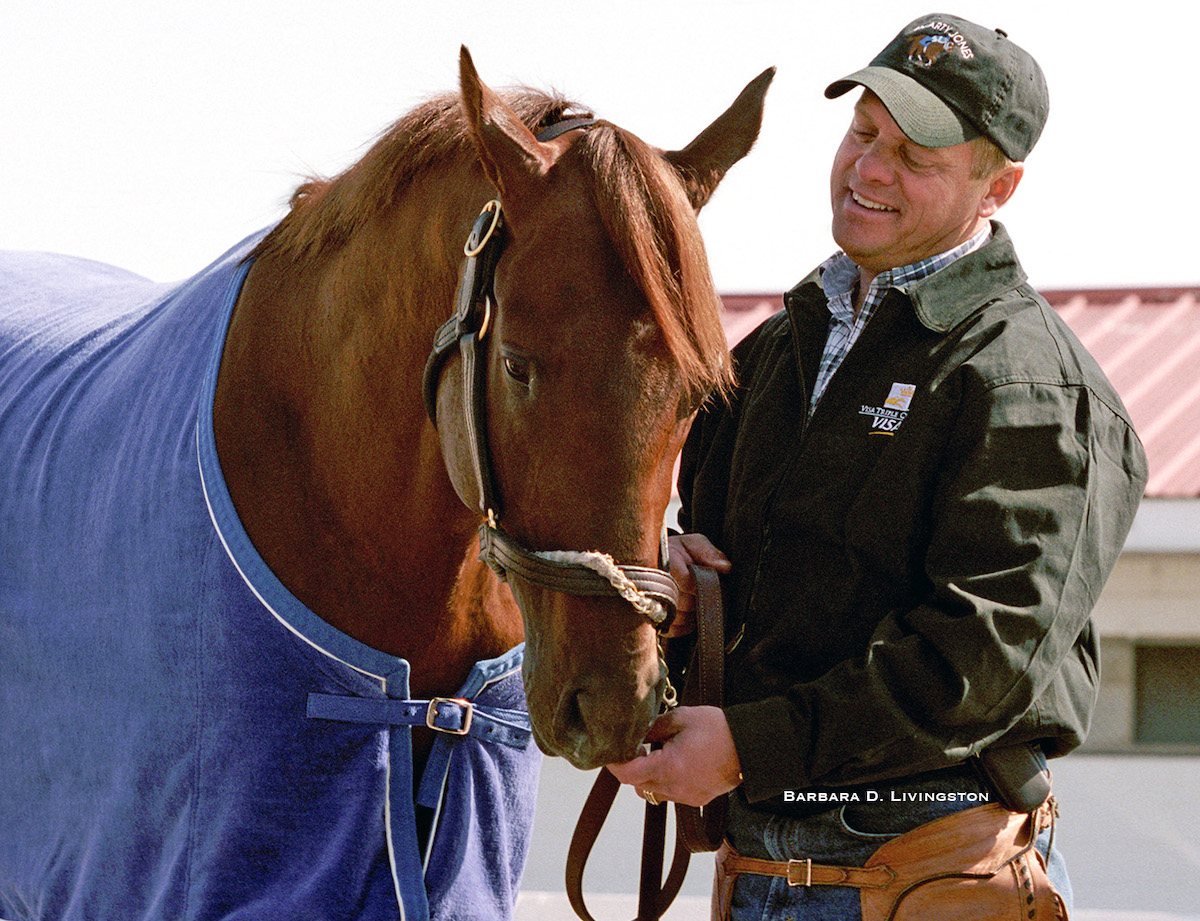 Servis settled into Oaklawn and took aim on the one-mile Southwest, to be run on Feb. 28, the true third birthday of Smarty Jones. Even so, the trainer advised the Chapmans against any early celebration.
Servis settled into Oaklawn and took aim on the one-mile Southwest, to be run on Feb. 28, the true third birthday of Smarty Jones. Even so, the trainer advised the Chapmans against any early celebration.
“I thought that would be his first defeat,” Servis said. “We had a rough trip getting there with the weather. We’d missed some training, and I didn’t have him cranked up for the race. Didn’t want him peaking too soon and all that jazz. And he looked like a beat horse at the head of the lane – then he dug in and shook those horses off.
‘Nothing else surprised me’
“After he did that, nothing else he ever did surprised me,” Servis added. “What he showed me that day was the heart and the courage he would show every time.”
Next came the Rebel Stakes, at 8½ furlongs on March 20. Todd Pletcher sent his two-for-two Pulpit colt Purge to Oaklawn, thinking it might be a soft touch, and watched Smarty Jones dismiss him with ease. Later, Purge was good enough to win the Peter Pan and Jim Dandy.
On April 10, in the Arkansas Derby with its new $1m purse attached, Borrego came to town fresh from a solid second in the Louisiana Derby. As he aged, Borrego would win the Pacific Classic and Jockey Club Gold Cup. But on that day at Oaklawn, he could get only within a length and a half of Smarty Jones at the end of nine furlongs. Suddenly, the $5m bonus was very much in play.
“The Arkansas Derby was the last day of the meet,” recalled Servis. “At the time Churchill Downs was under a lot of construction, and I didn’t want to go in there right away. So we went to Keeneland first.
“I loved the atmosphere,” Servis continued. “Every time I went back to the barn Smarty was sprawled out snoozing in his stall. But he did not like that racetrack; he was not training good, and he was starting to carry some filling in his ankles. We switched up and went to the training track for a few days, and he was great. Then it was on to Churchill Downs, and everything was normal. He went back to himself.”
Soggy affair
The 130th Kentucky Derby on May 1, 2004, was a soggy affair. It rained all morning, took a brief break, then rained most of the afternoon, with a torrential cell over Churchill Downs just before the main event.
Smarty Jones was not bothered, and Elliott took his cue immediately from the gate to secure prime position going into the crucial first turn, surrounded by 17 scrambling runners.
After another key move on the turn, Smarty Jones was galloping happily along behind pacesetting Lion Heart, while the rest dealt with the slippery ground and spraying mud “He was loving it,” beamed Servis.
In midstretch, Elliott took the lead as he pleased and drew away to win by nearly three lengths. Up in the stands, the Cellas watched the race from the box the family had occupied for half a century.
“It was complete ecstasy,” Louis Cella said. “We’re screaming in disbelief that this horse was going to win the Derby. We could say we had America’s dream horse coming out of Arkansas, and we actually made a little money on the promotion. Then when you throw in the national coverage, it was worth far more than the $5m paid out.
you throw in the national coverage, it was worth far more than the $5m paid out.
“We didn’t need to do it again, though,” Cella added. “It served its purpose, lightning struck, and how lucky were we?”
The Chapmans were the toast of Churchill, as Pat worked the media crowd and Roy sat in his wheelchair holding court, oxygen supply handy to ease his emphysema. In a quiet moment after the race, Servis was moved to reflect on the death of Robert Camac, and how, in the larger scheme of things, Smarty Jones should have been Camac’s horse.
‘Things happen for a reason’
“Being a trainer, I'm sure that was Bob’s dream to win the Kentucky Derby,” Servis said. “I’m fortunate to be where I am because of a tragic situation. I’ve always lived on the premise that things happen for a reason, but certainly nothing like that. There’s no reason for that.”
For the first time in 21 years, the winner of the Kentucky Derby adorned the cover of Sports Illustrated magazine (right), accompanied by the headline, ‘Why Everybody Loves Smarty Jones’.
Four of Smarty’s Derby victims tried him again in the Preakness Stakes, on May 15, to no avail. He won by 11½ lengths, with newcomers Rock Hard Ten and Eddington in his distant wake.
When the dust of the Pimlico main track settled, even the coolest heads were feverish over what was on the horizon. Triple Crown tries had come and gone with disappointment in 1997, 1998, 1999, 2002, and 2003. But this time, went the fervent hope, it would be different.
On the Saturdays between the Preakness and the Belmont Stakes, Philadelphia Park management threw open its doors for local fans to come watch Smarty Jones gallop, while other public rituals were performed and the principal players were paraded like racing’s two-legged show ponies.
Pennsylvania Governor Ed Rendell rarely let the Chapmans out of his sight. The van carrying Smarty Jones from Philadelphia Park to Belmont enjoyed a multi-state police escort.
Stewart Elliott, low key to a fault, grinned for the cameras as he rang the bell to open the New York Stock Exchange. Servis, true to his colors, threw out the first pitch at a Philadelphia Phillies game, then later appeared on the popular public radio news quiz show Wait, Wait … Don’t Tell Me and aced three questions about the emergence that spring of a choking brood of cicadas.
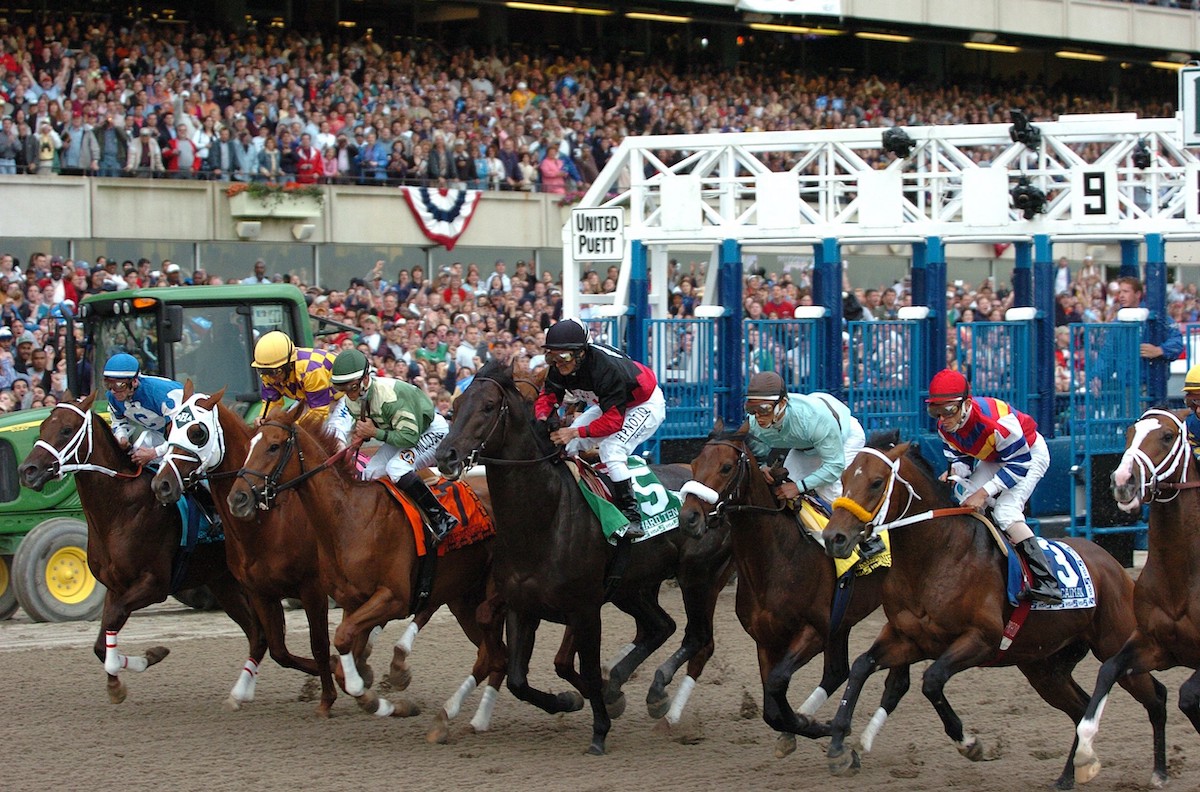 It was all fun and games, and then the gates opened for the 136th running of the Belmont Stakes on June 5. Smarty broke from the outside gate in the field of nine, so close to the pressing fans in the crowd of 120,000 they could almost touch their hero. Tracking his old pal Purge, Smarty Jones cruised easily through a first half-mile run in 48.65s, most of it around the long clubhouse turn.
It was all fun and games, and then the gates opened for the 136th running of the Belmont Stakes on June 5. Smarty broke from the outside gate in the field of nine, so close to the pressing fans in the crowd of 120,000 they could almost touch their hero. Tracking his old pal Purge, Smarty Jones cruised easily through a first half-mile run in 48.65s, most of it around the long clubhouse turn.
On the backstretch, though, things got hot. Elliott pressed forward with his colt as Jerry Bailey on Eddington and Alex Solis on Rock Hard Ten, both riding hard, took turns putting enough pressure on the front-runner to clock the second half-mile in 46.79s.
A matter of survival
After that, it was a matter of survival. As the pestering twosome faded away, Smarty led the field into the stretch, pursued now by Birdstone, winner of the Champagne Stakes at Belmont as a two-year-old but beaten nearly 16 lengths by Smarty Jones in the Derby.
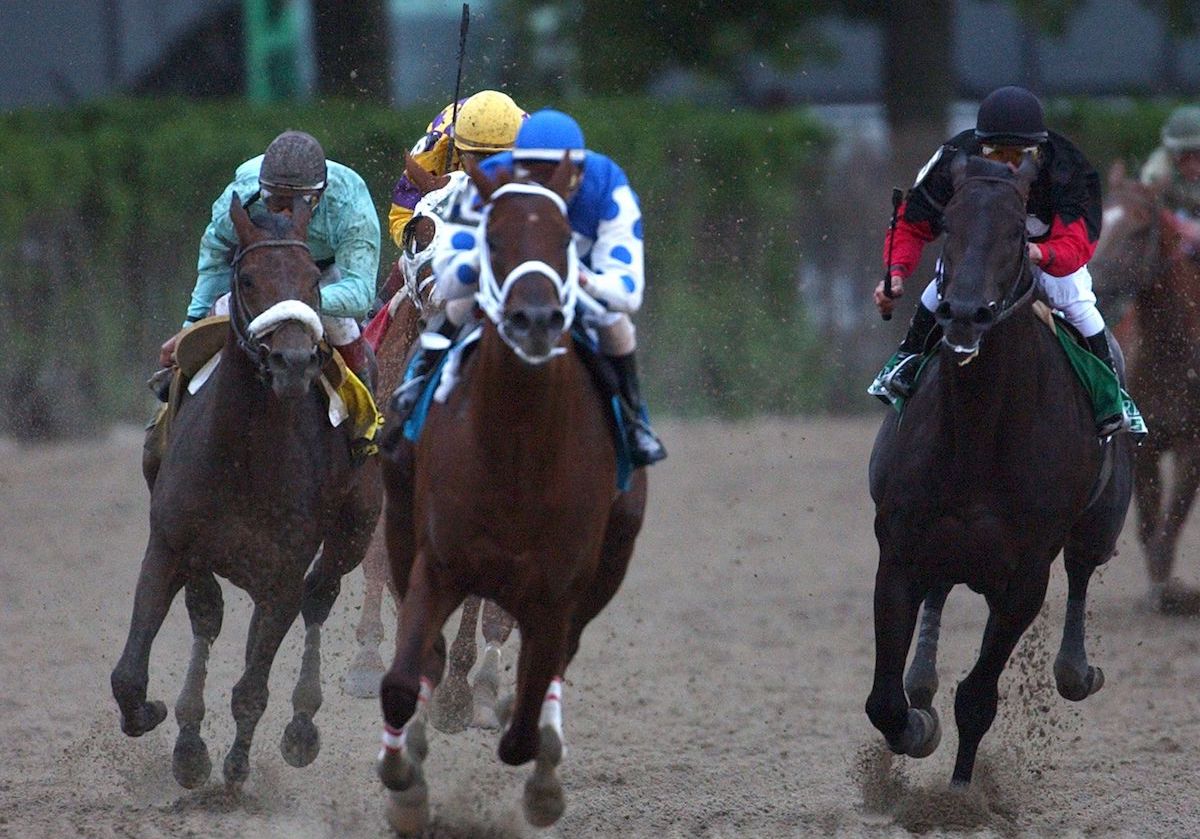 Inside the sixteenth marker, Smarty still held sway, fueled now only by the heart and the courage recognized so clearly by Servis in the battle for the Southwest Stakes. There was a moment, with a furlong to run, victory still seemed possible, and it was only in the last dozen strides that Birdstone caught and passed Smarty Jones to win by an official length. Nearly 13 lengths later, Eddington and Rock Hard Ten crossed the finish line.
Inside the sixteenth marker, Smarty still held sway, fueled now only by the heart and the courage recognized so clearly by Servis in the battle for the Southwest Stakes. There was a moment, with a furlong to run, victory still seemed possible, and it was only in the last dozen strides that Birdstone caught and passed Smarty Jones to win by an official length. Nearly 13 lengths later, Eddington and Rock Hard Ten crossed the finish line.
“People need to realize those fractions in the middle of the race played a part,” said Pat Chapman. “But that’s horse racing. As John told us before the race, we were going in there with a bullseye on our back, and they’ll try anything they can to beat him.”
Nick Zito and Edgar Prado, the men behind Birdstone, were apologetic in the face of widespread heartbreak, as was Birdstone’s owner, Marylou Whitney.
“I was with Marylou, and she was in tears,” Louis Cella said. “Before the race she told me, ‘I just want to come in second’. There was total quiet after the race. It was quite a moment.”
The moment passed, though, and hopes were high that the Smarty Party would continue. After the Belmont, the colt received a thorough vetting, while stud farms circled the Chapmans like hungry carnivores, ready to bet serious millions on Smarty Jones as a stallion.
It was announced that the Derby winner would be out of action for a while to recover from ankle bone-bruising, often an indicator of incipient fractures, but he was not officially retired.
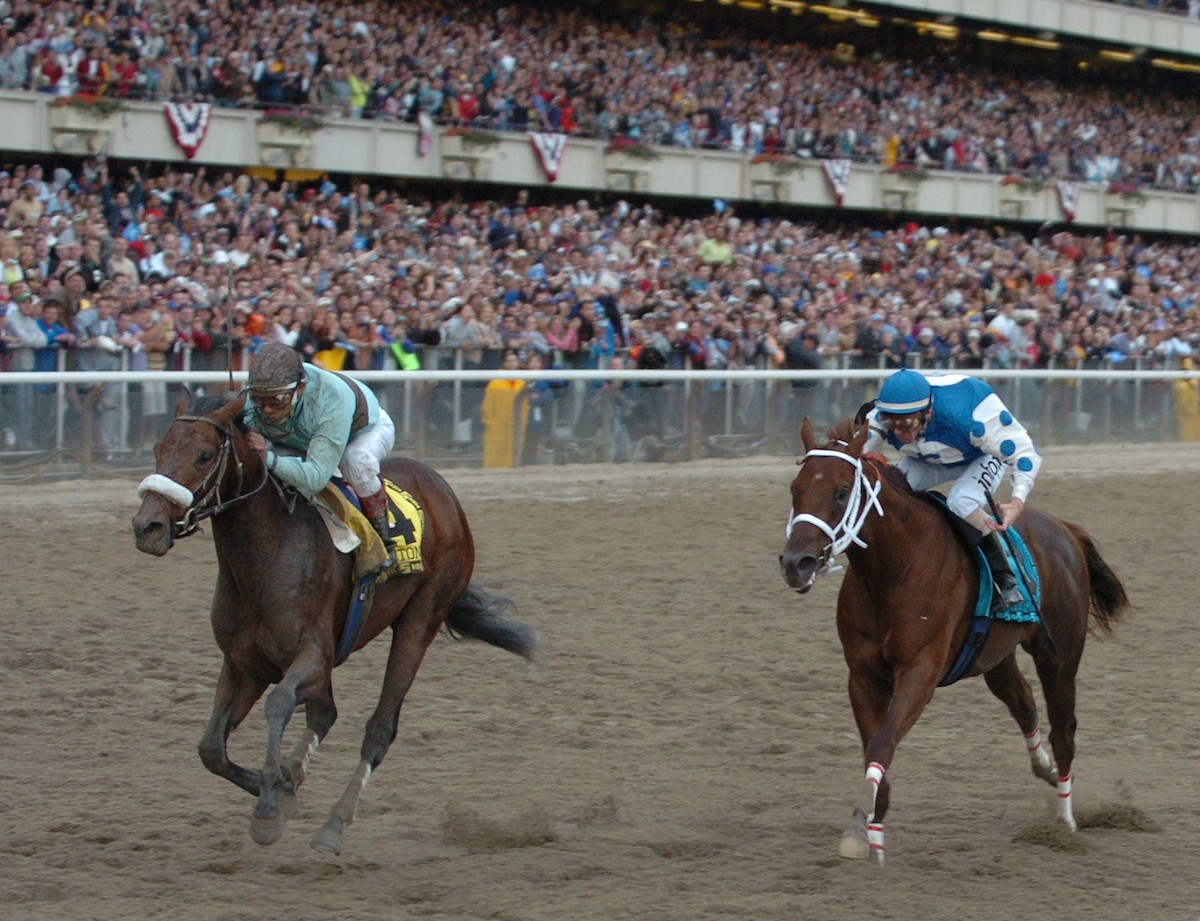 “We talked with ten different farms, and every one of them agreed to race him again as a four-year-old if he was found to be racing sound,” Chapman said. “After a while, we had him thoroughly checked again, and that’s when we found the cartilage loss in his left knee. With something like that, I couldn’t take a chance.”
“We talked with ten different farms, and every one of them agreed to race him again as a four-year-old if he was found to be racing sound,” Chapman said. “After a while, we had him thoroughly checked again, and that’s when we found the cartilage loss in his left knee. With something like that, I couldn’t take a chance.”
Smarty Jones was rightfully hailed as champion three-year-old male of 2004 and stood initially at Three Chimneys Farm in Kentucky. He moved to Calumet Farm, shuttled to Uruguay, then in 2019 returned to his home state at Rodney Eckenrode's Equistar Farm near Annville, Pa.
That spring, Eckenrode arranged with Parx Racing officials to bring Smarty Jones back to the track to parade for his fans on the 15th anniversary of his three-year-old season. Pat Chapman was there to help lead her horse, along with former groom Mario Arriaga and Eckenrode, down the muddy stretch to the cheers that must have sounded vaguely familiar to the handsome chestnut.
“He looked like he could have gone back into training,” Chapman said.
Servis has had his share of training highlights over the past 20 years with champion filly Jaywalk, Kentucky Oaks winner Cathryn Sophia, and Acorn Stakes winner Round Pond. As for Elliott, after a few quiet years post-Smarty Jones, he has found new life as the perennial leader of the jockey colony at Sam Houston Park and is bearing down on 5,700 career winners.
Roy Chapman died in 2007, at 79, and Pat Chapman lives in Sarasota, Florida, where she continues to savor her connection to her once-in-a-lifetime Thoroughbred.
Reliving old times
“When I moved into this community and they found out, I ended up doing interviews and giving talks about the experience of owning Smarty Jones,” Chapman said. “It’s fun reliving those times with new friends.”
She also has loaned the Kentucky Derby and Preakness trophies won by Smarty Jones to Parx Racing (formerly Philadelphia Park) for a dedicated display.
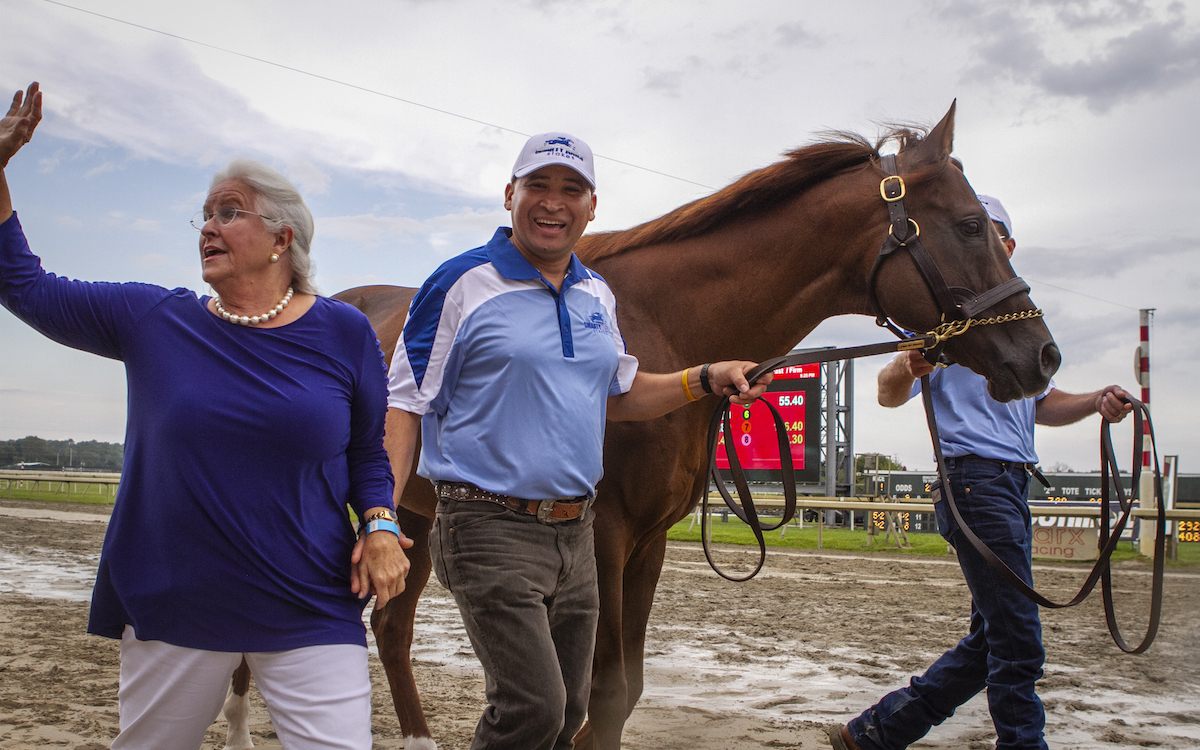
“He really became popular because of all those Arkansas fans,” Pat Chapman added. “They called him ‘Arkansas’ Horse’. Then, too, the people where he trained early and where we had a home called him ‘Florida’s Horse’. And of course he became ‘Pennsylvania’s Horse’. John Servis would say: ‘You know, this is America’s horse!’”
But why stop there? “About ten years after the Derby, I was in Greece with a couple of friends,” Chapman said. “We flew from a small island to the Athens airport, and then were on the shuttle bus from the plane to the terminal.
“It was May, and somebody started talking about the Kentucky Derby. A woman on the bus spoke up. ‘Oh my gosh, that reminds me of my favorite horse ever – Smarty Jones!’”
Chapman’s heart leaped. “I said, ‘That’s my horse!’ and she said, ‘That’s my horse, too,’ as a true fan would do,” Chapman said. “At that my friend spoke up. ‘No, ma’am, that really is her horse.’”
At dinner that night, Chapman and her companions were still laughing at the Smarty bolt out of the blue.
“Here we are in Athens, Greece, and that woman was talking about Smarty Jones,” she said. “Our Greek waiter was listening. ‘Smarty Jones?’ he asked. ‘That won the Kentucky Derby? My god, that’s my favorite horse! I have a picture of him on my wall at home.’”
• Read all Jay Hovdey's features in his Favorite Racehorses series
Golden Pheasant: ‘Entering the Japan Cup walking ring was like walking into a football stadium’
View the latest TRC Global Rankings for horses / jockeys / trainers / sires


